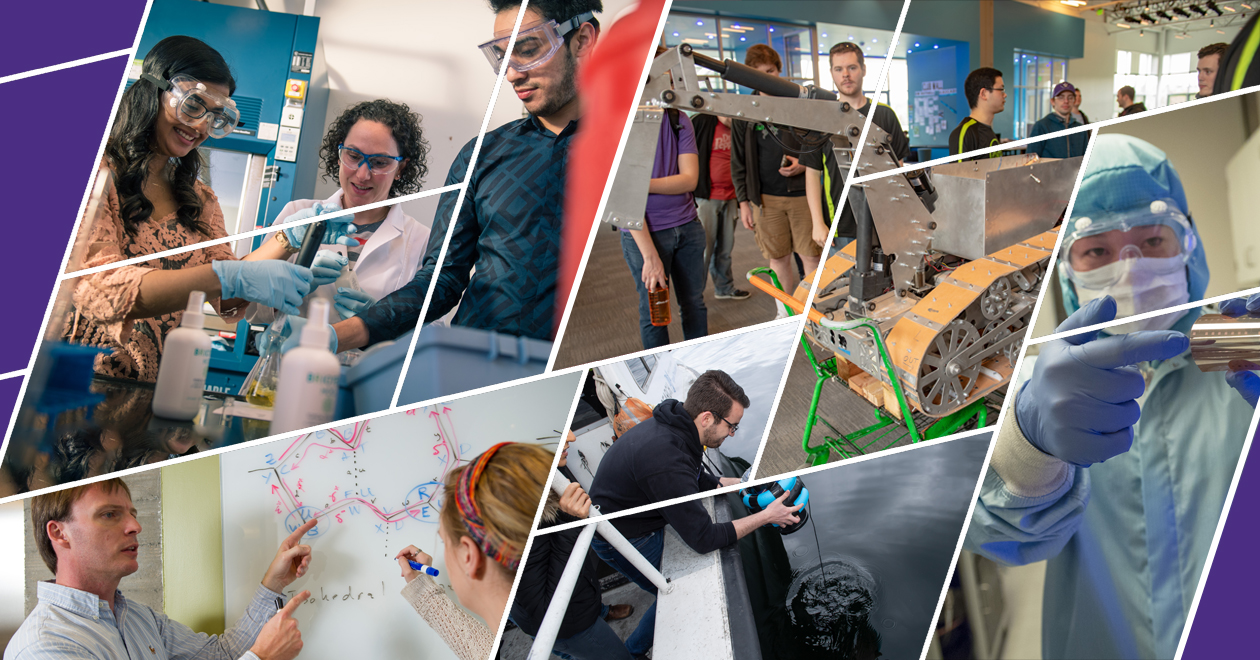
When potential employers support students by engaging them in research, they can both win.
And when faculty and staff engage with students throughout their many college experiences — especially first-generation students and those from underrepresented groups — those learners are much more likely to succeed and thrive.
Providing this kind of student support has always been central to the School of STEM at the University of Washington Bothell. But this academic year, the School of STEM is using the milestone of its 10th anniversary to shine new light on this kind of engaged learning.
A prime example is the Division of Computing & Software Systems’ recent 100th student capstone colloquium, which showcased student research to the campus community and the public.
Committed to every student’s success
The UW Board of Regents approved UW Bothell’s School of Science, Technology, Engineering & Mathematics, or STEM, in 2013, responding to a call for more science and technology graduates to meet the needs of regional employers. The first such STEM school in the state, it includes divisions of Biological Sciences, Computing & Software Systems, Engineering & Mathematics, and Physical Sciences.
And since then, the story of the school is one of growth. It had about 600 students in 2013 and has grown to about 1,550 today. And in 2022 alone, School of STEM researchers brought in about $3.2 million in research dollars.
Even as it grows, however, the School of STEM — like all of UW Bothell — strives to be accessible to students of all backgrounds and flexible enough to meet their needs. Its mission to serve all students has not wavered,” said Dr. Leslie Cornick, dean of the School of STEM who came to UW Bothell in 2020.
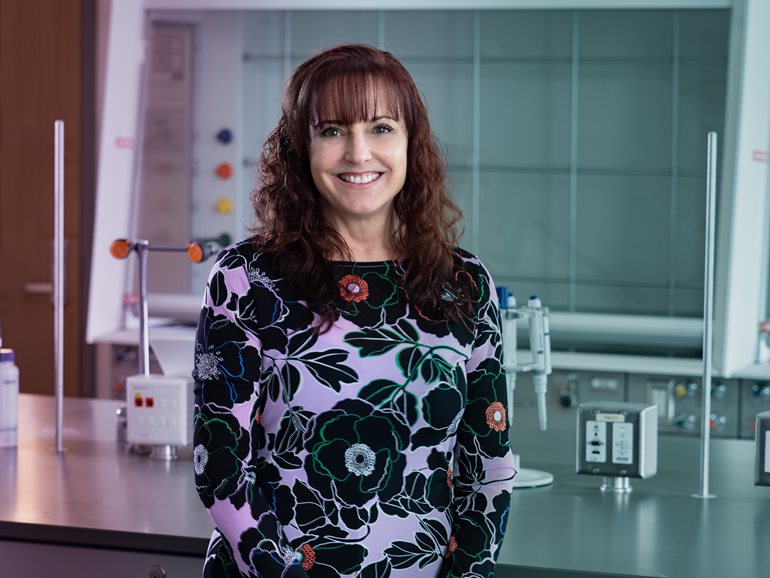
“What makes me most proud,” she said, “is that we truly have faculty and staff who are deeply committed to our students and their success, particularly around providing opportunities for students from underprivileged and underrepresented backgrounds.”
In fact, the school has increased its focus on diversity, equity and inclusion — for students, faculty and staff — in the past few years, Cornick said, pointing to all the challenges the pandemic and national racial and social justice reckonings have highlighted. She added that having multiple STEM disciplines in one school enables everyone to collaborate and learn from each other on issues of equity and access.
Meeting workforce and economic needs
Another benefit to being a multidisciplinary school on a smaller campus, Cornick said, is the ability to be more nimble in creating programs that respond to regional employment needs. It took less than a year, for instance, to create the new Center for Biotechnology, Innovation & Training.
“It allows us to create opportunities for students that are timely,” Cornick said. “We don’t want to be driven by every fad but do want to keep up with changes in how we engage with industry to provide opportunities for our students, coming out of the pandemic and moving into the next 15 years.”
Another key point of pride for the University and its School of STEM, Cornick said, is that “we have a really great track record of students being able to graduate with very minimal debt, if any.”
It’s an important part of choosing which college or university to attend, for students as well as their families.
“There is still such significant value in a higher education degree in terms of lifetime earnings, income potential and career progression,” Cornick said. “We don’t want families to be nervous about making that investment — even in a time of economic uncertainty — because the downstream outcomes are so strong, especially for first-generation and underrepresented students.”
Student research showcased in capstones
Years before the School of STEM was formed, the CSS faculty was already providing high-quality education with practical applications that distinguishes an education at UW Bothell. Then and still today, as CSS students near completion of a bachelor’s degree, they must complete a 10-credit capstone course in which they show their ability to connect classroom theory with community and industry-based experiences.
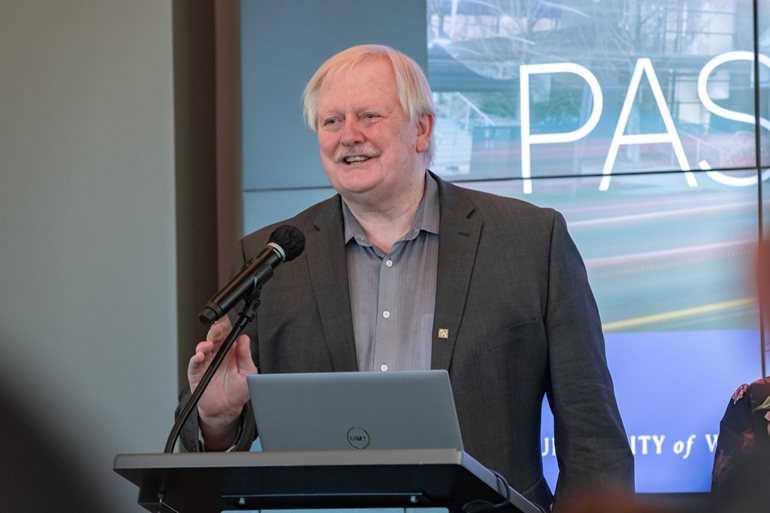
These capstones can take the form of internships, research with faculty, or individual or group projects. And because UW Bothell’s industry partners often sponsor capstone projects, Cornick said, students end up making connections that can translate to employment offers for after graduation.
Dr. William Erdly knows these capstone projects as well as anyone. An associate professor, he was founding director of the CSS program in 1996 and now serves as chair of the CSS division. Erdly said capstones, which were called “cooperative learning” years ago, enable students to use the skills they’ve learned to solve real-world problems, often in tandem with sponsoring companies in the region.
In this way, he said, students “learn about organizations and their culture, and how to have an impact. The result is that students gain both experience and confidence as they translate their knowledge into great products and services that people care about.”
Connections with regional partners
When their work is complete, the near-graduates give poster and oral presentations on their capstone projects each quarter in colloquia that are open to their peers as well as faculty, staff and members of the public.
Janet McDaniel, the School of STEM’s undergraduate capstone coordinator, notes that these events are a powerful experience for students throughout the school. Student researchers in the Division of Engineering & Mathematics — earning degrees in computer, electrical or mechanical engineering — have given 32 such colloquia. Students in biological and physical sciences have also presented in symposia, reporting on their findings in investigative research, independent studies or undergraduate research.
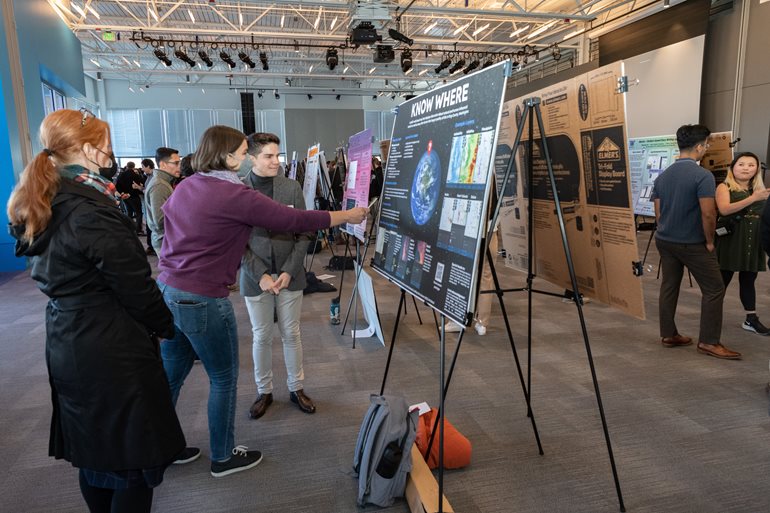
It’s great to see students make significant contributions “in industry, nonprofit organizations, and research venues large and small,” Erdly said, noting that in the 25-plus years CSS has been in operation, students have completed nearly 3,000 capstone projects, and the division’s 100th capstone colloquium was held this past autumn quarter.
With so many examples of impactful student research, it’s hard to choose which are most memorable, but Erdly did name several capstones that he thinks were particularly valuable. One is when UW Bothell computing students demonstrated the need for near-vision screening to basic eye tests for school children. Another set of capstones centered on developing software systems and data center designs as the Tulalip Tribes implemented a comprehensive new technology strategy.
These capstone colloquia showcase not only student work but also UW Bothell’s connections to the community and industry — locally, regionally, nationally and internationally. “The partnerships and opportunities for collaboration continue to grow and strengthen,” Erdly said. “And after 25 years, we are finding that our own alumni are now sponsoring projects for current students.”
Building for the future
Even as the School of STEM celebrates its milestone moments and the achievements of its students and alumni, it is also looking ahead to a future of excellent instruction, hands-on training, and a continued focus on access, diversity and equity.
One important element of the school’s future is the new STEM building now under construction and recently named Innovation Hall.
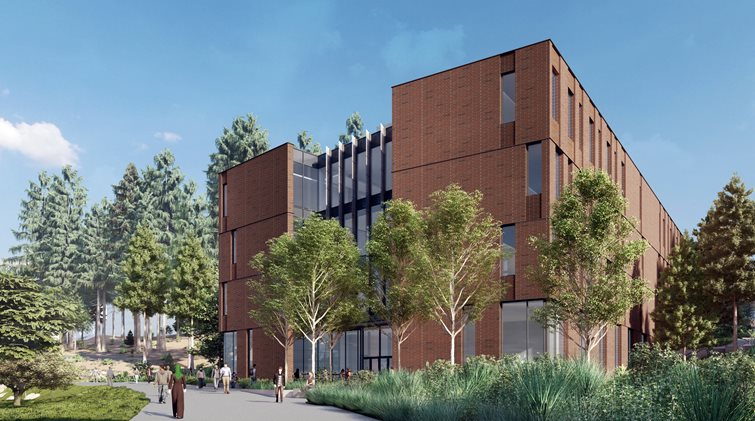
“To me, one of the most exciting parts of Innovation Hall is the fact that we are sharing that space with Cascadia College,” said Cornick, “because that creates so many opportunities for collaboration between faculty and for students to interact with each other — and for students at Cascadia to see themselves coming to UW Bothell.”
The building, costing about $63 million in all, will hold labs for engineering, computer science, biology and physics. It will include 21,500 square feet of program space for UW Bothell and Cascadia each, with 5,000 additional square feet to be shared between the two institutions.
Cornick said programs will start moving into the building in fall 2023, and instruction will start in winter quarter 2024.
“We’re starting to think about having hard-hat tours for friends of the institution coming up shortly,” she said. “I’ve been inside the building, and it’s incredible.
“And I love the name. Innovation Hall will be a great complement to Discovery Hall where STEM programs are currently held. We’re almost there — and we’re very excited.”
Watch the timelapse camera feed of Innovation Hall being built.



